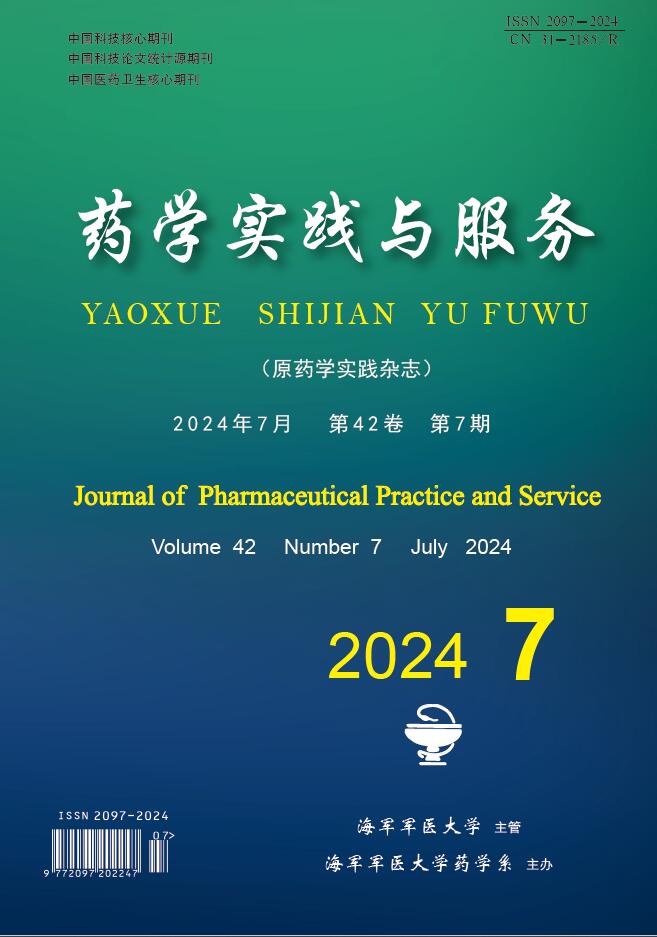-
糖尿病为世界三大慢性病之一,据国际糖尿病联盟调查报道,2019年全球约有4.6亿人罹患2型糖尿病(T2DM),中国占30.45%,且全球每年超400万患者死于糖尿病并发症[1]。二甲双胍是临床治疗T2DM首选药物,降血糖效果显著,且具有一定的减重作用[2]。有报道表明[3],肥胖患者内脏脂肪更容易沉积,会降低胰岛素敏感性,影响临床疗效。因此,临床上多用二甲双胍联合其他药物治疗肥胖型T2DM。美国糖尿病学会于2019年在糖尿病诊疗标准中建议有减重需求的T2DM患者可优先考虑胰高血糖素样肽(GLP-1)类似物。利拉鲁肽作为GLP-1类似物日制剂,可促进胰岛细胞再生,保护心血管系统,临床常将其与二甲双胍联合用于治疗肥胖型T2DM[4]。而度拉糖肽是新型GLP-1类似物,每周注射1次,长期治疗肥胖型T2DM患者依从性更高[5]。脂肪组织已被证实可以合成和分泌脂肪因子,参与调控体内糖脂能量,且部分脂肪因子也被证实参与了肥胖人群胰岛素抵抗病理过程,因此研究其治疗过程中的水平变化对评估临床疗效意义重大。但关于度拉糖肽、利拉鲁肽分别联合二甲双胍用于肥胖型T2DM的疗效优劣及对血清脂肪因子的影响鲜有报道。故本研究进行对照分析,从机体代谢、体脂成分、脂肪因子等方面探究度拉糖肽联合二甲双胍的应用价值,以期为今后的临床治疗提供参考依据。
-
将2021—2023上海市嘉定区安亭医院符合入组条件的肥胖型T2DM患者200例,按入院顺序排序1~200,采用电脑随机数字表法分组,将患者按1∶1配对原则分配,每位患者赋予1个随机数,随机数序号为1~100为利拉鲁肽组,101~200为度拉糖肽组。纳入条件:①符合《中国2型糖尿病防治指南(2020年版)》[6]中T2DM的相关诊断标准;②体重指数≥28 kg/m2;③精神正常、具有较好沟通能力,可遵医嘱完成治疗;④入组前单用二甲双胍治疗(500 mg/次,2次/d),且效果不佳;⑤对本研究相关药物无过敏;⑥患者或家属签署同意书。排除条件:①1型糖尿病;②近期接受其他减肥方案;③合并严重心脑血管疾病;④脏器功能严重不全;⑤合并肾脏移植、近期胃肠手术史;⑤合并全身感染性疾病、免疫系统疾病。该研究通过本院伦理委员会审批,且遵循《赫尔辛基宣言》中相关原则。2组临床资料相比,均无统计学差异(P>0.05),具有可比性,见表1。
组别 性别[例(%)] 年龄
($ \bar x $±s,岁)病程
($ \bar x $±s,年)合并症[例(%)] 男 女 高血压 冠心病 高脂血症 吸烟史 饮酒史 利拉鲁肽组 45(45.00) 55(55.00) 59.77±4.65 5.98±1.31 20(20.00) 8(8.00) 7(7.00) 37(37.00) 48(48.00) 度拉糖肽组 53(53.00) 47(47.00) 60.18±4.47 6.15±1.38 25(25.00) 11(11.00) 5(5.00) 34(34.00) 53(53.00) χ2值 1.281 0.636 0.893 0.717 0.523 0.355 0.197 0.500 P值 0.258 0.526 0.373 0.397 0.469 0.552 0.658 0.480 -
2组均给予常规饮食、运动指导。利拉鲁肽组给予利拉鲁肽联合二甲双胍治疗,利拉鲁肽注射液(批准文号:S20160005,Novo Nordisk A/S,规格:3 ml/18 mg)皮下注射,初始剂量0.6 mg/次,根据患者情况增加,最大剂量1.8 mg/次,1次/d;二甲双胍片(批准文号:国药准字H20184066,四川维奥制药有限公司,规格:025 g)口服,500 mg/次,2次/d。度拉糖肽组给予度拉糖肽联合二甲双胍治疗,二甲双胍用法用量同利拉鲁肽组;度拉糖肽注射液(批准文号:S20190021,Vetter Pharma-Fertigung GmbH & Co. KG,规格:1.5 mg/0.5 ml)皮下注射,1.5 mg/次,1次/周。2组均治疗3个月进行指标评价。
-
参照相关疗效标准[7],显效:血清空腹血糖(FBG)、餐后2 h血糖(2 h PBG)恢复正常或较治疗前降低>40%,血红蛋白(HbA1c)恢复正常或较治疗前降低>30%,体质量在标准值上下20%内;有效:血清FBG、2 h PBG较治疗前降低21%~40%,HbAlc较治疗前降低11%~30%,体质量降低>2 kg。无效:未达有效标准或病情加重。有效率=(显效例数+有效例数)/100×100%。
-
①治疗前与治疗3个月,采集静脉血,采用葡萄糖氧化酶法检测FBG、2 h PBG水平,试剂盒购自济南百博生物技术股份有限公司;采用免疫比浊法检测HbA1c水平,试剂盒购自北京利德曼生化股份有限公司;全自动生化分析仪(cobas 8000 c 701型,罗氏诊断公司)检测总胆固醇(TC)、甘油三酯(TG)水平。②血清脂联素(adiponectin)、神经肽Q(NPQ)、白脂素(asprosin)、鸢尾素(irisin)水平均采用酶联免疫法进行检测,试剂盒均购自Bio-Rad Laboratories, Inc.。③以体重身体脂肪检测器(HBF-701SH型,欧姆龙公司)记录体脂肪率、体重指数、四肢皮下脂肪率、内脏脂肪指数。④记录治疗期间患者腹部不适、低血糖、呕吐、恶心等不良反应情况。
-
采用SPSS25.0进行数据分析,连续变量采用(
$ \bar x $ ±s)描述,以独立样本或配对t进行检验;分类变量以[例(%)]描述,以校正或未校正χ2检验,以P<0.05为差异有统计学意义。 -
2组治疗前FBG、2 h PBG、HbAlc、TC、TG水平相比,均无统计学差异(P>0.05)。2组治疗3个月FBG、2 h PBG、HbAlc、TC、TG均较治疗前改善,且度拉糖肽组改善幅度较大(P<0.05),结果见表2。
组别 时间 FBG(cB/mmol·L−1) 2 h PBG(cB/mmol·L−1) HbAlc(%) TC(cB/mmol·L−1) TG(cB/mmol·L−1) 利拉鲁肽组 治疗前 9.87±0.73 14.21±2.11 9.52±0.85 5.08±0.48 2.39±0.28 治疗3个月 6.92±0.49# 8.65±0.97# 7.39±0.41# 4.72±0.35# 1.94±0.25# 度拉糖肽组 治疗前 9.91±0.69 13.98±2.26 9.44±0.79 5.02±0.51 2.41±0.30 治疗3个月 6.64±0.51*# 8.19±1.01*# 6.81±0.36*# 4.48±0.29*# 1.62±0.27*# *P<0.05,与利拉鲁肽组比较;#P<0.05,与本组治疗前比较。 -
治疗前,度拉糖肽组体脂肪率、体重指数、四肢皮下脂肪率、内脏脂肪指数与利拉鲁肽组相比,均无统计学差异(P>0.05)。治疗3个月,2组体脂肪率、体重指数、四肢皮下脂肪率、内脏脂肪指数低于治疗前,且度拉糖肽组较利拉鲁肽组低(P<0.05),结果见表3。
组别 时间 体脂肪率(%) 体重指数(kg/m2) 四肢皮下脂肪率(%) 内脏脂肪指数(%) 利拉鲁肽组 治疗前 34.71±1.53 30.08±0.95 38.72±7.38 13.47±2.08 治疗3个月 32.08±1.16# 27.35±1.24# 35.81±4.05# 12.15±0.98# 度拉糖肽组 治疗前 34.95±1.61 30.22±0.73 39.03±8.29 13.68±1.96 治疗3个月 31.20±1.27*# 26.61±1.08*# 34.29±3.17*# 11.34±1.05*# *P<0.05,与利拉鲁肽组比较;#P<0.05,与本组治疗前比较。 -
2组治疗前血清adiponectin、NPQ、asprosin、irisin水平相比,均无统计学差异(P>0.05)。治疗3个月,2组血清adiponectin、NPQ、irisin水平均较治疗前升高,血清asprosin水平低于治疗前,且度拉糖肽组血清adiponectin、NPQ、irisin水平较利拉鲁肽组高,血清asprosin水平较利拉鲁肽组低(P<0.05),结果见表4。
组别 时间 adiponectin(ρB/mg·L−1) NPQ(ρB/ng•L−1) asprosin(ρB/μg·L−1) irisin(ρB/ng·L−1) 利拉鲁肽组 治疗前 3.62±0.79 915.73±208.43 2.25±0.51 2.85±0.76 治疗3个月 4.28±1.02# 1577.93±234.61# 1.16±0.38# 4.12±0.84# 度拉糖肽组 治疗前 3.74±0.81 932.39±211.34 2.19±0.47 2.91±0.79 治疗3个月 6.21±1.17#* 1786.54±251.49#* 0.95±0.33#* 4.73±0.62#* #P<0.05,与本组治疗前比较;*P<0.05,与利拉鲁肽组比较。 -
治疗3个月,度拉糖肽组有效率(98.00%),利拉鲁肽组有效率(91.00%),度拉糖肽组高于利拉鲁肽组(P<0.05),结果见表5。
组别 显效 有效 无效 有效率 利拉鲁肽组 54(54.00) 37(37.00) 9(9.00) 91(91.00) 度拉糖肽组 63(63.00) 35(35.00) 2(2.00) 98(98.00) χ2值 4.714 P值 0.030 -
治疗期间度拉糖肽组不良反应发生率(11.00%)与利拉鲁肽组(14.00%)相比,无统计学差异(P>0.05),结果见表6。
组别 恶心呕吐 低血糖 腹部不适 发生率 利拉鲁肽组(n=100) 7(7.00) 3(3.00) 4(4.00) 14(14.00) 度拉糖肽组(n=100) 6(6.00) 2(2.00) 3(3.00) 11(11.00) χ2值 0.411 P值 0.521 -
二甲双胍是国内外指南均推荐的T2DM一线治疗药物,其通过活化胰岛素,改善外周胰岛素抵抗,减少肝脏葡萄糖输出量,从而发挥降低血糖的作用,且可减轻患者体重[8-9]。肥胖作为T2DM的独立危险因素,其诱发高血糖机制更加复杂,会增加治疗难度。GLP-1是刺激胰岛素释放肠促胰素,可抑制β细胞凋亡,促使胰岛素合成及分泌,且经皮下注射,可显著降低血糖。另有研究表明,GLP-1通过可抑制胰腺α细胞合成胰高血糖素,有效减轻患者体重[10]。因此,以二甲双胍为基础的联合GLP-1方案是肥胖T2DM患者重要治疗方案。
度拉糖肽和利拉鲁肽均为GLP-1类似药物,能作用于胰岛β细胞促使胰岛素释放,同时还能通过调控胃肠蠕动和胃部排空,控制血糖。李秋胜等[11]研究结果显示,度拉糖肽联合二甲双胍治疗T2DM有效率高于利拉鲁肽联合二甲双胍。本研究结果也显示,度拉糖肽组有效率98.00%高于利拉鲁肽组91.00%(P<0.05),与上述研究结果一致,进一步证实了度拉糖肽联合二甲双胍治疗肥胖型T2DM疗效确切。另外,治疗3个月后,2组FBG、2 h PBG、HbAlc、TC、TG、体脂肪率、体重指数、四肢皮下脂肪率、内脏脂肪指数均较治疗前降低(P<0.05),说明两种治疗方案均能改善机体糖脂代谢状态,调节体脂成分,对病情恢复具有积极意义。而度拉糖肽组上述指标降低幅度大于利拉鲁肽组(P<0.05),究其原因可能是:①度拉糖肽是新型长效性GLP-1药物,每周注射1次,且不受饮食等因素影响,使用更简便,可提高患者治疗依从性;②度拉糖肽是基因融合蛋白,与人体GLP-1同源程度超过90%,可更好发挥天然GLP-1作用,且相对分子质量较大,经过肾脏代谢速度较慢,可延长药效时间[12]。此外,二甲双胍具有降血糖与减重作用,但代谢速度也较快,度拉糖肽与其相结合,协同增效作用更为明显。度拉糖肽组治疗期间不良反应率与利拉鲁肽组比较,差异无统计学意义(P>0.05),表明度拉糖肽联合二甲双胍是肥胖T2DM安全可行的治疗方案。
近年肥胖型T2DM患者逐渐增多,代谢调控细胞越来越受到临床关注,有可能成为临床治疗新靶点。有研究证实[13],脂肪组织属于机体内分泌器官,可合成和分泌脂肪因子,参与T2DM病理代谢进程。adiponectin、NPQ、irisin均为保护性脂肪因子,能改善胰岛素敏感性,维持机体能量代谢稳定。相关文献表明[14-16],T2DM患者血清adiponectin、NPQ、irisin水平低于正常人群,血糖控制后,血清上述指标水平升高,且升高幅度与血糖控制效果呈正相关。因此,血清adiponectin、NPQ、irisin水平可作为反映疾病预后效果的敏感性指标。asprosin作为肝脏脂肪因子,在胰岛素抵抗状态下呈高水平表达,会激活G蛋白相关信号通路促使肝葡萄糖释放,加快糖尿病的病理进程。且有研究[17-18]显示,葡萄糖依赖性刺激会抑制asprosin释放,且与胰岛素抵抗、肥胖、机体代谢密切相关。本研究显示,2组患者治疗3个月后血清adiponectin、NPQ、asprosin、irisin水平较治疗前均有改善,且度拉糖肽组血清adiponectin、NPQ、irisin水平高于利拉鲁肽组,asprosin水平低于利拉鲁肽组(P<0.05),提示度拉糖肽联合二甲双胍能更好地增强脂肪因子的调节效果。分析可能原因为,二甲双胍可降低食欲,减少能量摄入与体内脂肪含量;度拉糖肽也可抑制食欲,增加饱腹感,减少食物摄入量,二者联合能共同促进脂肪组织消耗、分解,抑制脂肪细胞合成,从而能更好地调节脂肪因子水平,但具体机制仍需进一步探索。肥胖型T2DM作为一种慢性疾病,其远期疗效一直是临床关注的焦点。武艳丽等[19]研究显示,随访6个月和1年,度拉糖肽的降糖疗效优于利拉鲁肽。但由于研究时间限制,本研究治疗结束后未进行随访,对机体体脂成分及血清脂肪因子的远期影响尚不明确,有待增加随访时间做进一步探究。
综上可知,度拉糖肽与二甲双胍治疗肥胖型T2DM可提高临床疗效,促进糖脂代谢,并能调节体脂成分及血清脂肪因子,减轻患者肥胖症状,且具有较高安全性。但本研究为单中心研究,受选取样本量、治疗时间等因素影响,研究结果可能存在偏倚,有待扩大样本,延长治疗时间做进一步分析。
Effects of dulaglutide combined with metformin on body metabolism, body fat composition and serum adipokines in obese patients with type 2 diabetes mellitus
doi: 10.12206/j.issn.2097-2024.202305032
- Received Date: 2023-05-19
- Rev Recd Date: 2024-02-21
- Available Online: 2024-07-16
- Publish Date: 2024-07-25
-
Key words:
- type 2 diabetes /
- obesity type /
- metformin /
- dula glycopeptide /
- adipokines /
- body fat composition
Abstract:
| Citation: | MAO Zhiyi, WANG Xiaoyan, CHEN Xiaoying, TANG Yifei. Effects of dulaglutide combined with metformin on body metabolism, body fat composition and serum adipokines in obese patients with type 2 diabetes mellitus[J]. Journal of Pharmaceutical Practice and Service, 2024, 42(7): 305-309. doi: 10.12206/j.issn.2097-2024.202305032 |









 DownLoad:
DownLoad: